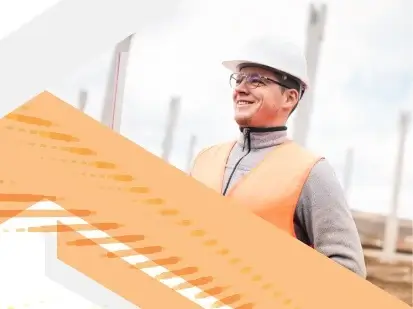BORUSAN - Safer port operations for assets and workers
FIGURES RELATED WITH THE SCOPE OF PROJECT

Tracking of 681 personnel

Tracking of 47 Motorized Vehicles

1 Alarm Display Centre

152 Anchors & Gateways
BORUSAN PORT
Borusan Port provides harbour and terminal services in three different fields of operation with its 5 million tons general cargo, 450 thousand TEU container and 350 thousand vehicle handling capacity. With its approximately 1,800 meters docks and its terminal area of 465 thousand square meters, it serves its customers in closed, open bonded, unbonded and warehouse areas.
As its main theme, Borusan Port has adopted the concept of “Affordable and Clean Energy” among the 17 Sustainable Development Goals identified under United Nations Development Program, and it is one of the first ports to hold Green/Eco Port Certificate in Turkey.
The Purpose of the Project and the Expectations
- The instantaneous location tracking of the assets in Borusan Port, which is established on a total area of 465,000 m²,
- Facilitating the counting of the personnel at emergency muster area,
- Identifying the location and the status of the personnel as quickly as possible in cases of collusions or occupational accidents involving injuries that require emergency response,
- Avoiding the labor losses arising from contact due to Covid-19 pandemic,
- Obtaining the data such as the distance travelled, fuel consumption and exceeding the speed limits within the plant and displaying the possible collusion risks with the real time tracking of the motorized vehicles,
- Under all these optimization works, increasing the efficiency and the occupational safety of the plant.
Solutions Developed against Challenges
- Considering the size of the port area, the coverage areas were defined as regions and sub-regions. The distances of the tracked personnel and equipment to the anchors in these regions are displayed in the system, thus facilitating the locating of the personnel and equipment in emergencies.
- The high number of systems installed due to the size of the port area resulted in an increase in RF data traffic. In order for the emergency alarms not be affected by this traffic and for obtaining accurate location data, the emergency signal is firstly transmitted to the nearest anchor, and if not transmitted, it is broadcast. So, the speed of the emergency data is kept at optimum level.
- In order to decrease the volume of the RF communication within the plant, the tracking of the motorized vehicles is carried out by means of the GSM Infrastructure. At regions where GSM is not available, the data transmission is carried out through RF, thus minimizing the data transmission errors such as delays and deviations. In addition, against the possible interruptions in GSM and RF connections, the data is stored and transmitted as soon as the connection is re-established, thus eliminating the data losses.
- Since the port area has challenging weather and environmental conditions, the devices used outdoors are protected with special boxes, and their RF range is increased by means of powerful antennas.
- The passive tags used by the personnel are integrated with the UWB & Active RFID tags used by our system, so a single tag is used for both the location tracking of the personnel and for PACS actions.
Project Gains
- Wipelot Social Distancing Tracking System allowed for the identification of the retrospective social distance violations of sick personnel, and for finding out the personnel with whom the social distance was violated. The early identification of the potentially contacted personnel eliminated the risks of infection, and significantly decreased the labor losses due to contact.
- Wipelot Central RTLS Platform allowed for the real time tracking of the motorized vehicles, and for monitoring the extent of compliance with the driving rules in port area. The fuel consumption was optimized by examining the values such as the driving habits, driving distance and fuel consumption of different operators. Accordingly, the maintenance periods of the equipment were re-scheduled.
- Safezone Collision Warning System allowed for the warning of the operators with audio and visual signals and the pedestrian personnel with vibration in case of zone violations (warning zone, danger zone), and for the reporting of the violations together with the zones where they happened (warning zone, danger zone). Thus, a safer working area was provided. By minimizing the potential accidents, the costs of equipment damages and the losses of time/labor caused by potential accidents were eliminated, thus contributing to efficiency.
- Wipelot Android Application allowed for displaying the proximity to the relevant person/device depending on movement and direction, when entering the zone of a personnel or equipment whose zonal location was known.
With the project implemented at Borusan Port by Wipelot:
- The labor losses due to contact decreased by 70%.
- The speed of counting the personnel at emergency muster areas increased by 20-30% with the implemented project, expediting the access to people in dire circumstances.
- The route-load optimization provided 5-8% efficiency in resource and energy consumption and 2-5% efficiency in fuel consumption.
- A personnel member who had a heart condition issued an emergency call using Wipelot Lone Worker Safety System. Borusan Port team accessed the scene immediately and provided the first response.
- In CFS area, a dangerous machine-staff proximity was avoided without any accident by means of Wipelot Collision Warning System.


